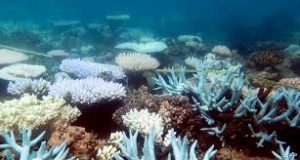New Method For Freezing And Storing Coral:

While working on Australia’s Great Barrier Reef, scientists have successfully trialed a new method for freezing and storing coral in their first trial.
- This cryogenically frozen coral can be stored and later reintroduced to the wild.
- But current process requires sophisticated equipment including lasers, however a new lightweight “cryomesh” can be manufactured cheaply and better preserves coral.
- As rising ocean temperatures destabilize the delicate ecosystems of Coral, therefore scientists are striving to protect coral reefs.
- The Great Barrier Reef has suffered four bleaching events in the last seven years, including the first-ever bleach during a La Niña phenomenon, which typically brings cooler temperatures.
- Scientists used the cryomesh to freeze coral larvae at the Australian Institute of Marine Sciences (AIMS).
- Cryomesh was devised by a team from the University of Minnesota’s College of Science and Engineering.
- This is lightweight and can be manufactured cheaply.
- It better preserves coral and has the properties of cryoplates.
- The mesh technology will help store coral larvae at -196°C (-320.8°F).
Coral Reefs:
- Corals are marine invertebrates or animals which do not possess a spine. In scientific classification, corals fall under the phylum Cnidaria and the class Anthozoa.
- Coral is made up of genetically identical organisms called polyps.
- These polyps have microscopic algae called zooxanthellae living within their tissues.




